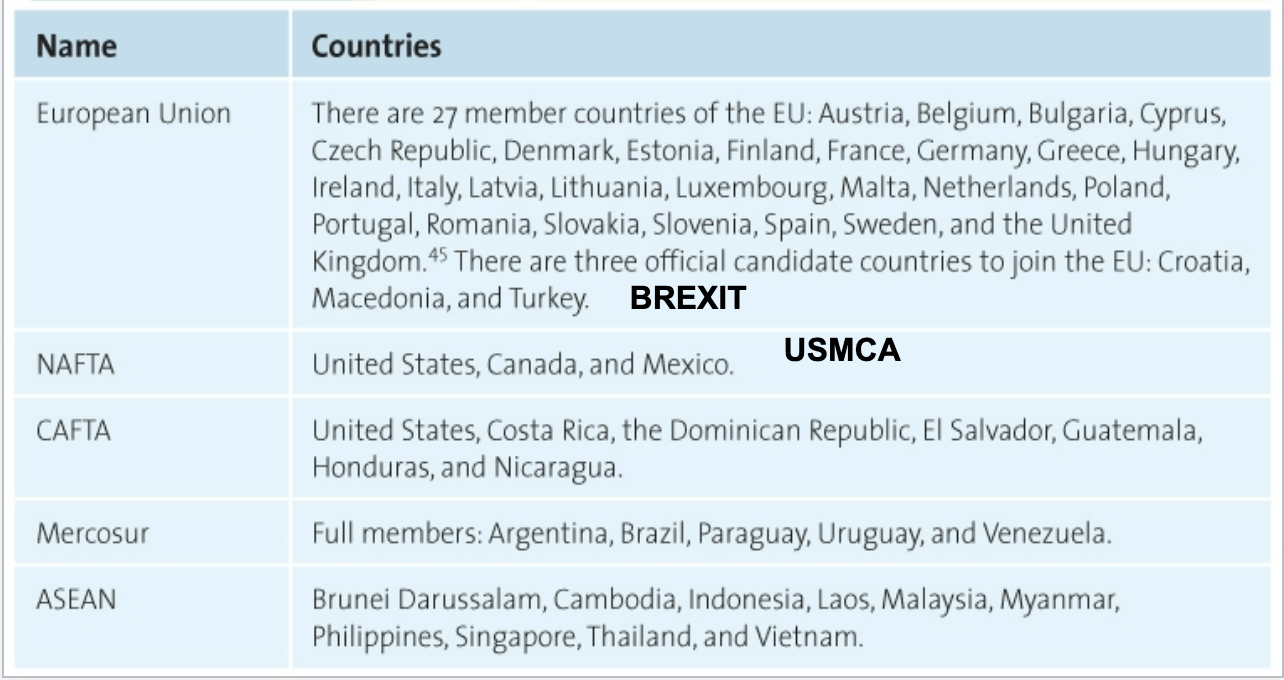4/3 PEST and International Adaption
1/14
There's no tags or description
Looks like no tags are added yet.
Name | Mastery | Learn | Test | Matching | Spaced |
|---|
No study sessions yet.
15 Terms
analyzing international political actions
government actions can include tariffs, quotas, boycotts, trade agreements, and exchange control
tariffs
tax
artificially raises prices
lowers demand
quotas
maximum limit
reduces availability of imported goods
may result in raised prices
domestic tariffs and quotas
tariffs and quotas both benefit domestically made products because they reduce foreign competition
exchange control
exchange rates
countertrading (bartering to take the exchange rate out of the equation)
when the US dollar strengthens…
Importers in the U.S. benefit. A stronger dollar means you can buy more foreign goods for the same amount of money. This gives you the option to either keep prices lower (and potentially sell more) or maintain your prices and enjoy higher profit margins. In this case, you are buying goods using a stronger dollar, which gives you more purchasing power.
Exporters in the U.S. are negatively affected. When the dollar is strong, buyers in other countries have to spend more of their local currency to buy the same U.S. goods. This can make American products more expensive compared to local alternatives, possibly reducing demand. To stay competitive, exporters may have to lower their prices, cutting into profit margins. You are selling goods and receiving payment in weaker foreign currencies.
trade agreements

economic analysis
real income (mind inflation)
market size and population growth
general economic environment
evaluating general economic environment
trade deficit vs. trade surplus
gross domestic product (GDP)
exchange rates
human development Indices (quality of life)
ease of doing business Indices
analyzing sociocultural factors
a lack of understanding of international customs typically gets firms in trouble
examples
diet coke in japan - diet meant “sick”
chevy nova - “no go” in mexico/south america
ford pinto - “tiny male genitals” in brazil
colgate cue - “cue” is the name of a porn magazine in france
jala jala - discovery in previous year’s MBA class
collectivism vs. individualism (cubes vs. large tables in office) HOFSTEDE psychology
global marketing mix: product or service strategies
sell the same product or service in both the home and host country market
ex. plane parts need to be the same
sell a product or service similar to that sold in home country but includes minor adaptations
ex. makeup shades adapting based on countries
ex. changing restaurant/chain food sizes for different countries
sells totally new products or services
there are advantages and disadvantages to each of these methods
adaptation pros/cons for multi-national product
pros
address local market needs
prevents local competitors to “be closer”
manufacturing in country can even provide a “local angle”
cons
inconsistent brand message if positioning is significantly different
costs are higher since economies of scale are lost
lose Country of Origin angle
some items shouldn’t be adapted
choosing a global marketing strategy: adaptation positives
cultural nuances, language, and view of product and consumer role
lead to.. different positioning? different marketing execution (4 p’s)?
pizza hut vs. dominoes in china
Reasons for Pizza Hut Success
1. Dine-in versus carryout: Pizza Hut makes itself a fine dining restaurant in China, while Domino's only offers carry-out.
2. Local flavor: Pizza Hut designs flavors specifically for the Chinese, while Domino's uses toppings that are popular in Japan and Taiwan.
3. Traffic: Beijing's traffic jams make Domino's 30-minute delivery promise impossible to achieve.
4. Size: Pizza Hut trims down the pizza size for the Chinese, while Domino's sticks to the American portion.
think globally, act locally
adopt a standardized global strategy
adopt a localized execution